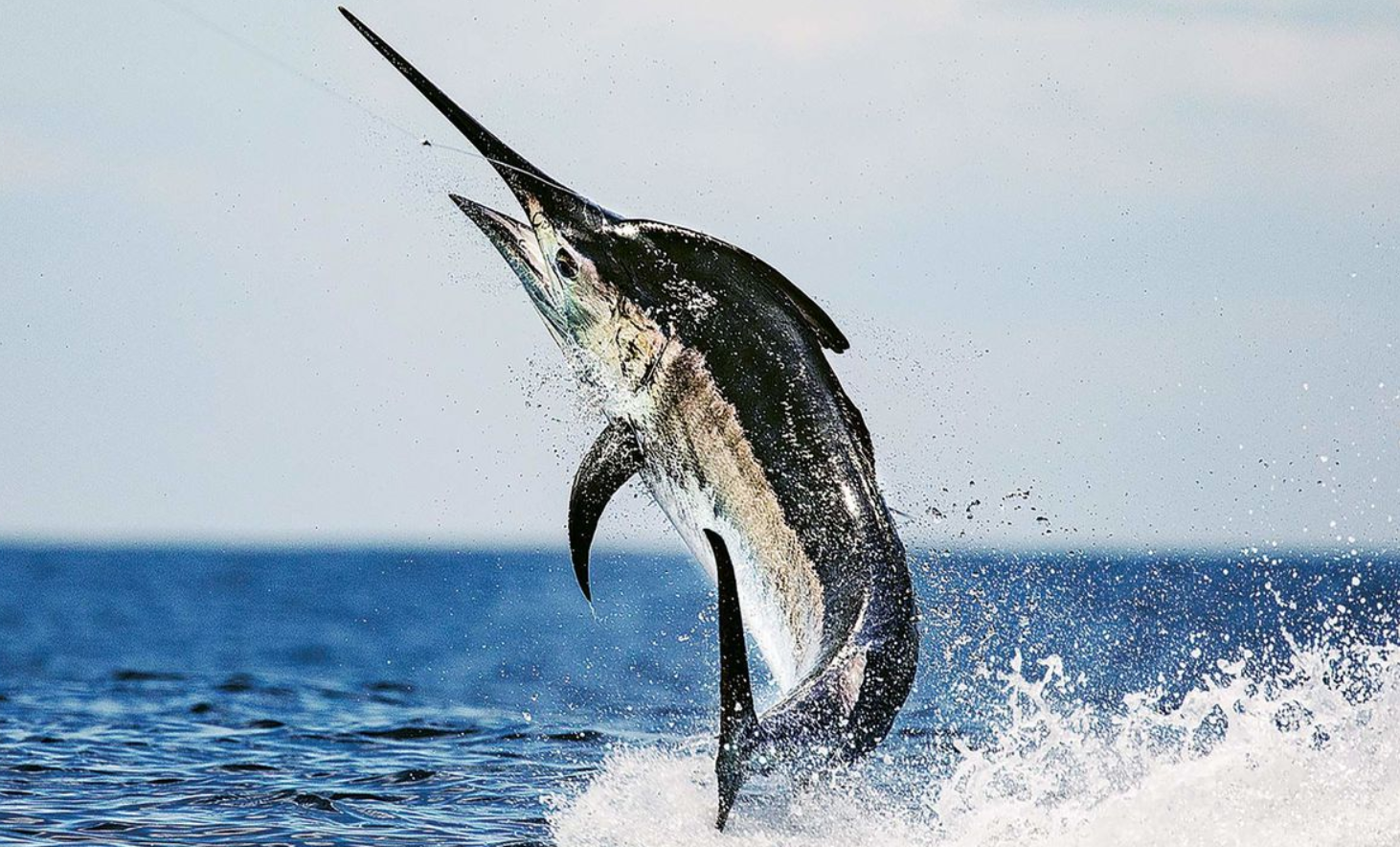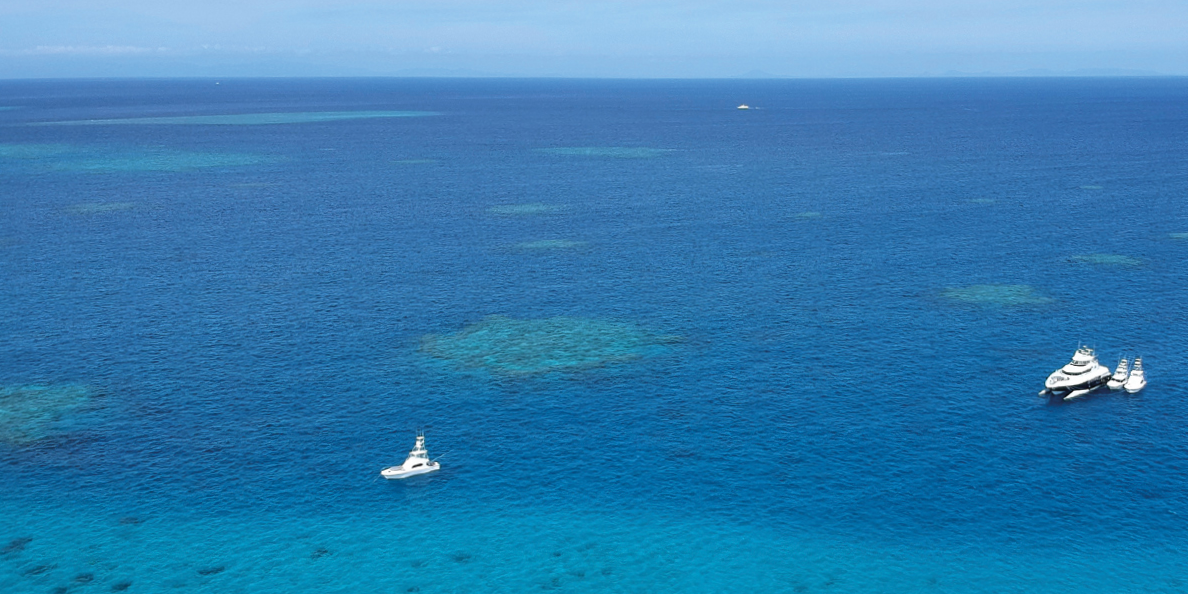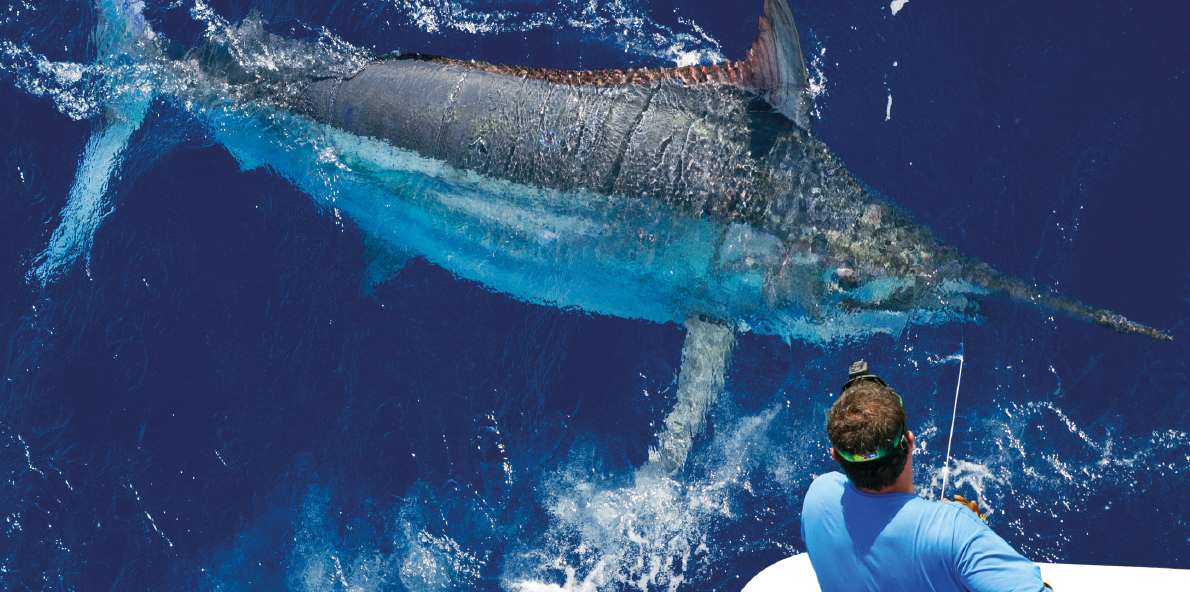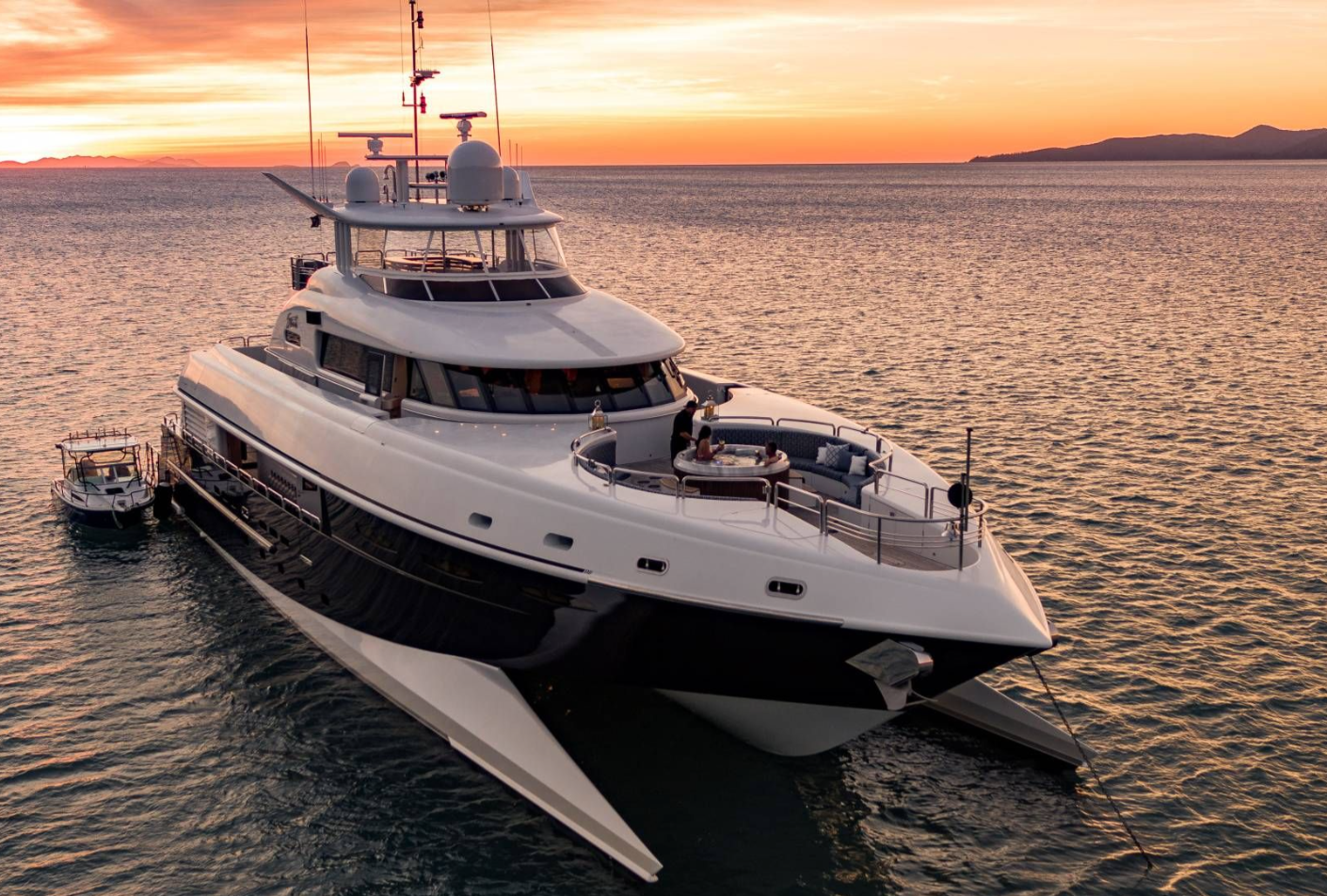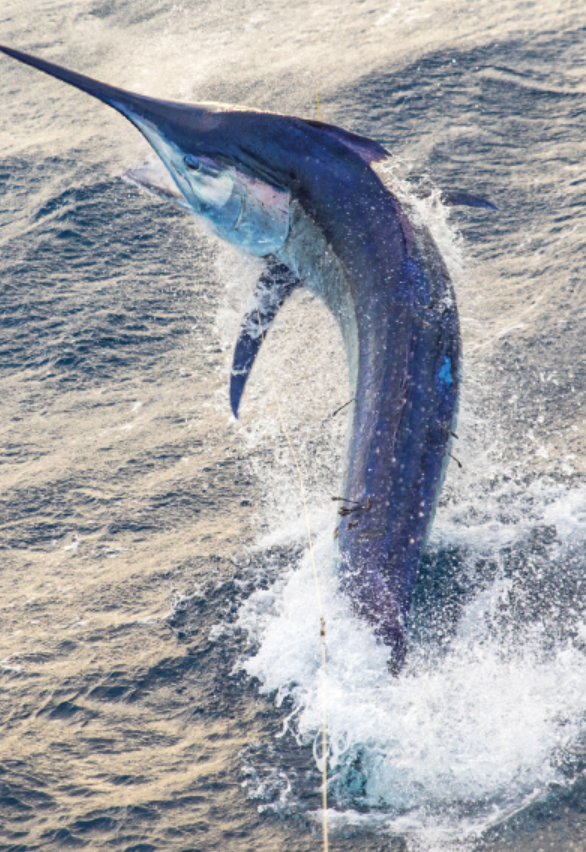Mothershipping for Monster Marlin in Australia
Words Julia Zaltzman/Photograph Kelly Dalling Fallon
Giant black marlin are the fastest fish on the planet reported to clock speeds of around 80 mph and the Great Barrier Reef Is where they call home. Every year, thousands of anglers flock to Cairns, Australia — The “Marlin Mecca” — to hook a 1,000-lb. (453.59-kg) catch. For a truly immersive sportfishing experience, mothershipping is the key.
Head Down Under
The planet’s largest coral reef never gets too crowded. Bigger than the Great Wall of China, the Great Barrier Reef is the only living entity visible from space. And when looking for black marlin it’s a real hot spot. Black Marlin grow up to 15’ (4.57 m) with the strength and endurance of a marathon mud wrestler. It can take up to six hours to reel in a billed beauty and even then, the fish might jump up, spit the lure and get away.
Daytrippers spend at least eight hours on the water lure trolling or live baiting. But the serious big guns spend weeks at sea experiencing big game fishing at its best. And that’s when a superyacht mothership steps in.
It depends on currents and weather patterns, but the mothershipping season tends to stretch from late September to early December with the superprime months being October and November. This is when the fish migrate down maiden seas just north of Lizard Island and south of Cairns.
“That’s when you use the heavy tackle and have the best chance of catching a black marlin over 1,000 lbs. (453.59 m),” says Martin DeBanks, captain of the 115’ (35.05 m) catamaran, Spirit. The Great Barrier Reef marine park authority has strict bag limits and the entire Australian sport fishing industry is hot on conservation, which only strengthens the area’s appeal.
The Strength of Experience
Spirit homeports in Cairns, the hub of world-class fishing charters with the biggest concentration of game boats in the world. The cat has been mothershipping for the past four years with Captain DeBanks at the helm. He has spent more than 15 years traveling the world fishing, twice circumnavigating when captain of the 120’ (35.58 m) Valkyrie. He believes nowhere compares to Australia in terms of consistency.
Jumping up to 20’ (6.1 m) out of the water, the silhouette of a leaping black marlin, with its whole top fin on display, is reminiscent of a full-rigged sailing ship. “Everyone, no matter who, should just once in their life witness one of these monsters off the back of their yacht. It’s freakin’ amazing,” he said. But it doesn’t happen without experience on your side.
“My knowledge of running a mothership and fishing off of big boats is up there,” says Captain DeBanks. “But the guys that we mothership for, the game boat captains and the guys in the cockpit, they’re a different breed. They live and breathe marlin fishing. Their knowledge is phenomenal.”
Watch the Weather
Morning breaks and the game boat captains’ radio chatter can be heard running up and down the reef sharing info and reporting sightings. It’s a competitive sport, but where there’s one big fish, there’s bound to be another. Even in 35 knots of wind being slammed by 7’ (2.13 m) chop, the true salty dogs go out fishing every day in their 50’ (15.24 m) boats. But even the best need experienced motherships with captains who know where to anchor.
“They’re out on the reef and can’t go home every night,” explains Captain DeBanks. “You have to be able to tuck your mothership right up inside the reef, because the weather can be so bad, and most superyacht captains won’t do that because they don’t know the area well enough. And because it can be a bit hairy.”
Pretty much every aspect of giant marlin fishing is “hairy”. Plentiful stories circulate the docks of marlin jumping onto boats, skewering crew or pulling people overboard. When one of Captain DeBanks’ crew members caught on a 500-lb. (226.8 kg) blue marlin in French Polynesia, it was nearly game over.
“He’s a really experienced cockpit guy but he took a wrap (wrapping the line around your hand) and then the boat rolled, the line went slack and the fish took off,” he recalls. “It jumped and yanked him out of the cockpit. I was driving the boat and I saw him come past being towed by the marlin. Luckily, another crew member in the cockpit turned the drag up on the rod and snapped the line. Otherwise, he would’ve gone down with Davy Jones.”
The Advantages of a Mothership
On a usual day, Spirit’s shallow draft means she can venture into the lee of the reef and get close to the prime fishing grounds. Tying up alongside a large cat like Spirit keeps the game boats safe and stable. In the morning, they head off for a hard day’s fishing and on their return step straight from their cockpit onto Spirit to be pampered with service and food. A yacht like Spirit also has the facility to refuel the game boats giving the entire set up – a maximum of two game boats – up to one month’s autonomy.
Adrenaline rushes are part and parcel of big game fishing – DeBanks himself has hooked a “dinosaur” marlin weighing 1,250 lbs. (556.99 kg) out at Linden Banks. But there is another side to mothershipping. Bottom fishing inside the reef offers up nannygai, red emperor and schools of yellowfin. Further afield in Papua New Guinea, taking a tender upriver for black bass fishing or riding jet skis through crocodile-infested creeks is on the menu. For the scores of owners and charter guests who head to Australia each year, however, the allure of snagging a record marlin is often hard to resist.
“Just be sure if you’re record fishing to take the rod yourself as soon as the reel goes off,” advises Captain DeBanks. “If you get any help, even just the rod handed to you, it doesn’t count.” And no one would want to see that.
Top 5 Facts: Black Marlin
- 1. The black marlin is the only marlin with non-retractable fins
- 2. The world record catch weighed 1,560 lbs. (707.6 kg) and measured 14’ 6” (4.42 m) long with 6’9” (2.06 m) of girth.
- 3. Black marlin is worth around $31,325.30 per pound.
- 4. The BBC claims the black marlin is the fastest fish on the planet, based on a marlin caught on a fishing line. It was said to have stripped line off a reel at 120’ (35.58 m) per second , meaning the fish was swimming nearly 82 mph
- 5. Black marlin can live for up to 25 years
This article was originally published in Frank, a magazine by Denison Yachting.
